Basically, there are three transportation means to Tokyo from Narita International Airport.
- Taxi
- Bus
- Train
If you can afford very expensive taxi fare, taxi is the most convenient and comfort way to Tokyo. It takes about 60 minutes to the center of Tokyo if there isn’t traffic jam.
Bus takes over 60 minutes to Tokyo. Time to take depends on which part of Tokyo bus goes to and traffic on the roads. You might need to take train or taxi from the bus stop you get off.
As train is not affected by traffic jam, it will be operated on schedule except special occasions like some kind of accident. When you take a train, you need to get up and down the stairs with your baggage at the station or need to change trains, and also might need to take taxi if your hotel is not near the station you get off.
Taxi to Tokyo
From Narita Airport to Tokyo, taxies adopt the fixed fare system. Fixed fare is different depending on which zone of Tokyo you want to go. It ranges from 16,000 yen to 26,500 yen. There are six zones. For example, if you want to go to Shinjuku or Shibuya (zone D), fixed fare is 22,000 yen or 22,500 yen (difference comes from difference of route).

Fixed taxi fare board
In addition to this fare you also have to pay the expressway toll. It differs depending on which expressway taxi takes. I think the expressway toll is about 3,000 yen. So if you go to Shinjuku or Shibuya, you have to pay about 25,000 yen in total.
You need not to pay tip for driver. In the early morning and late night (10 pm to 5 am), extra fare will be applied.
If you tell the destination, probably a driver understands where to go. But it may be safe to show the written destination, or to point the destination on Google maps.
Don’t open or close taxi’s door by yourself. In Japan, all the taxi doors are opened and closed automatically by taxi driver.
At Terminal 1, there are signboards where to head for taxi stand in arrival lobby. Follows the instruction, and outside of the building you can easily find out the taxi stand across the street.

Bus, taxi guide board at T1
At Terminal 2, just go out of the exits of the building, you can find out the taxi stand across the street.
At terminal 3, there is the taxi stand, but no taxi might be there. Probably you better take free shuttle bus to Terminal 2 or walk to Terminal 2 (about 10 to 15 minutes’ walk).
Bus to Tokyo
There are three main busses to Tokyo. They are Airport Limousine bus, The Access Narita bus and Tokyo Shuttle bus. Airport Limousine bus has many bus routes to go to various part of Tokyo (including some hotels), but expensive. The Access Narita bus goes to Tokyo station and Ginza. Tokyo Shuttle bus goes to Tokyo station. All bus users can sit in the seats, because bus companies sell tickets within the maximum number of seats.
Airport Limousine bus
For Tokyo, it has following routes.
- T-CAT(Tokyo City Air Terminal), Tokyo Station, Nihonbashi
- Shinjuku
- Ikebukuro, Mejiro, Kudan, Korakuen
- Roppongi and Akasaka
- Hibiya and Ginza
- Shiba, Shiodome, Takeshiba, Rinkai Fukutoshin (Tokyo Water Front)
- Ebisu and Shinagawa
- Haneda Airport
- Shibuya and Futakotamagawa
- Asakusa, Kinshicho, Toyosu
- Kichijoji
- Wakabadai, Inagi, Chofu
- Minami Osawa, Keio Tama Center, Seiseki Sakuragaoka
- Tachikawa and Akishima
- Takao and Hachioji
If your hotel is near the bus stop of above routes or if Airport Limousine bus stops is at your hotel, Airport Limousine bus is comfort way to Tokyo next to taxi.
Bus fare is 3,100 yen (adult), 1,550 yen (child: elementary school students (about 6 to 12 years old))
Free baggage allowance is up to two suitcases (of no more than (h)120 cm x (w)60 cm x (d)50 cm in size and 30 kg in weight).
Most buses have a toilet. Bus provides free Wi-Fi service.
You have to buy bus ticket at the Airport Limousine bus ticket counter before you go to the bus stop.

Airport limousine bus ticket counter
Airport Limousine bus has three ticket counters in Terminal 1, two ticket counters in Terminal 2 and one ticket counter and one ticket vending machine in Terminal 3. Your bus stop number, departure time and your destination are printed on your boarding ticket.
You can refer to the timetable.
You can reserve bus ticket from Tokyo to Narita Airport by telephone or online. Refer to bus reservation web pages by telephone or online. If you want to make reservation online, you have to register Limousine bus membership before making online reservation.
The Access Narita bus
The Access Narita bus goes to Tokyo station and Ginza station for subway. Up to Ginza station it takes approximately 65 to 75 minutes. Buses are operated with 20 minutes interval. Here is Timetable.
If you want to get on The Access Narita bus, you have to go straight to the bus stop without purchasing bus ticket! Purchase ticket on the bus. Bus fare is 1,000 yen (adult), 500 yen (child). Bus stops are for Terminal 1, No.31, for Terminal 2, No.2 and No.19, for Terminal 3, No.2.
Since Terminal 1 and 2, bus stops are same with Tokyo Shuttle bus, don’t confuse with Tokyo Shuttle bus. Way of getting on bus is different. Tokyo Shuttle bus needs boarding ticket when you get on.
Baggage allowance is one suitcase per person (of no more than 200 cm sum of 3 dimensions (L+W+H=200 cm) and 20 kg in weight). Most buses have a toilet.
Here are bus stop locations.
You can reserve bus ticket from Tokyo to Narita Airport, but web site is only Japanese version (useless for non Japanese speaker).
Tokyo Shuttle bus
Tokyo Shuttle bus goes to Tokyo station. It takes about 60 minutes to get there. Buses are operated with 20 minutes interval. Here is Timetable.
Bus fare is 1,000 yen (adult), 500 yen (child). You have to buy bus ticket at Keisei tickets counter before you go to the bus stop.

Keisei bus tickets counter
There are 2 Keisei ticket counters in Terminal 1, 2 Keisei ticket counters in Terminal 2 and One Keisei ticket counter in Terminal 3.
Bus stops are same with The Access Narita bus for Terminal 1 and 2, that is, for Terminal 1, No.31, for Terminal 2, No.2 and No.19. Don’t confuse your intended bus with unintended bus (The Access Narita bus). For Terminal 3, bus stop is No.1.
Baggage allowance is one suitcase per person. Most buses don’t have toilet.
You can reserve bus ticket from Tokyo to Narita Airport, if you make reservation, bus fare is 900 yen. Here is reservation site.
Which bus you should take
If you carry one suitcase and your hotel is near Tokyo station Yaesu Exit (or Ginza station), or you don’t mind taking the train or taxi after getting off the bus, The Access Narita bus or Tokyo Shuttle bus is a good choice because bus fare is less expensive and bus leaving interval is much shorter than Airport Limousine bus.
If you carry two suitcases or your hotel is near one of the Airport Limousine bus stops and you don’t mind expensive bus fare, Airport Limousine bus may be a good choice.
Train to Tokyo
There are two railway companies that operate trains to Tokyo. One is JR-EAST (JR for short) and the other is Keisei Electric Railway (Keisei for short). Trains of both companies leave at Terminal 1, stop at Terminal 2. Railway stations are located on the basement of each Terminal.
Since there isn’t railway station at Terminal 3, passengers who use Terminal 3 must walk to or take free shuttle bus to Terminal 2 if they want to take the train. It takes about 10 to 15 minutes to walk from Terminal 3 to 2.

Free shuttle bus
JR (Japan Railway) train to Tokyo
There are basically two kinds of trains. One is Narita Express (N’EX for short), the other is Rapid Train.
N’EX is a limited express train with all reserved seating. N’EX provides you comfortable and secure environment. You have to pay for a fare ticket and for a limited express ticket. You can buy these tickets at Narita Airport stations (JR EAST Travel Service Center or JR Ticket Office (called Midori-no-Madoguchi)).You can exchange your “Exchange Order” with “JR Rail Pass” at JR EAST Travel Service Center.

JR EAST service center at T2
N’EX leaves Narita Airport every 30 minutes. It takes about 60 minutes to get Tokyo station. After stopping at Tokyo station, it goes to other big stations, Shinagawa (about 70 minutes), Shibuya (about 80 minutes), Shinjuku (about 85 minutes) and Ikebukuro (about 90 minutes).
Total payment of fares and charges are 3,020 yen for Tokyo station, 3,190 yen for Shinagawa, Shibuya, Shinjuku, Ikebukuro stations. There are Green cars (first class cars) and their fares and charges are 4,560 yen for Tokyo, 4,730 yen for other stations.
Rapid Train goes for Tokyo, Shimbashi, Shinagawa, Yokohama and other stations. Train leaves with 60 minutes intervals. It takes about 90 minutes to get Tokyo station. This train has Green cars (first class cars). Fare for ordinary cars is 1,280 yen. Since ordinary cars don’t have reserved seats, there is no assurance for seating. But you can usually get seat.
If you plan to get off at Tokyo station, beware you have to walk about 15 minutes with your baggage to change trains (like change to Yamanote line) or to go out of ticket gates! N’EX and Rapid Train use railways of Sōbu line and the platform of Sōbu line is located at B5F far from other lines’ platforms. If you plan to change trains, you better get off at Shinagawa station (except you change to Chūō line). You can change trains with short walk.
If your hotel is located near Yaesu Exits of Tokyo station, it may be better to use one of above-mentioned buses. Walking distance is shorter.
Keisei to Tokyo
Kensei runs three kinds of trains. They are Skyliner, Access Express and Keisei Main Line Limited Express.
The fastest train is Skyliner. Keisei boasts it takes only 41 minutes to get Keisei Ueno station. All Skyliners bound for Keisei Ueno station. It leaves Narita Airport with 20 to 30 minutes intervals. Skyliner is all reserved seating. Skyliner offers you comfortable environments.
You have to pay usual fare (1,240 yen) and for Skyliner fare (1,230 yen), in total 2,470 yen. Ticket can be bought at Narita Airport stations (Keisei Ticket Office). Though there are tickets vending machines near the stations on the basement, I recommend buying the ticket at the Ticket Office, because you can expect flexible response.

Ticket counter on B1
When you use Keisei trains bound for Keisei Ueno station, as distance between Keisei Ueno and JR Ueno station is long, you should change trains at Nippori station if your destination is Tokyo or other JR stations. That’s the problem of Skyliner.
Though Skyliner is fast, as most people change trains, the difference in the time to get the destination station becomes not so big between taking Skyliner and taking N’EX. When you change trains, you have to walk, get up and down the stairs with your baggage.
Access Express destination varies. You can ride on Acess Express with only usual fare (to Nippori 1,230 yen, to Shinagawa 1,520 yen etc.).
The same can say for Keisei Main Line Limited Express. When you use Access Express or Keisei Main Line Limited Express, as stopping stations and destinations are complicated, you should refer to route map and timetable for each line.
In general, most of Keisei Main Line Limited Expresses are bound for Keisei Ueno station. It takes about 80 minutes to get Keisei Ueno station. Since Access Express and Keisei Main Line Limited Express don’t have reserved seats, there is no assurance for seating. But you can usually get seat.
Which train you should take
If you want comfortable transportation, if your destination station is Shinagawa, Shibuya, Shinjuku and Ikebukuro and you can afford expensive fare, N’EX may be better choice. If you take N’EX, you need not change trains. And time to get destination station is not much different from using Skyliner.
If your destination station is not Shinagawa, Shibuya, Shinjuku and Ikebukuro, choice between N’EX and Skyliner is a matter of preference.
For slower trains, trains and less expensive buses may be competitive alternatives.
Avoid the rush hours
When you change trains with your baggage, you should avoid the rush hours about from 7:00 or 7:30 to 8:30 or 9:00 in the morning. During the rush hours trains were packed solid. Evening rush hours maybe 6:30 to 8:00 in the evening. Generally, evening rush hours would be better than morning rush hours.
Network of railways and subways in Tokyo
Tokyo is very huge city and has very developed, complicated network of railways and subways. Using this network is a good way to move around Tokyo. It is helpful to get the route map of railways and subways at Tourist Information Center, JR EAST Service Center or Skyliner & Keisei Information center.

Skyliner & Keisei Information Center on B1
You need the app for moving around Tokyo
Even looking hard at the route map of railways and subways, to judge which line you should take, and at which station you change trains is very difficult. Download and install the app called “Japan Travel – Route, Map, Guide, JR, taxi, Wi-Fi” (for Android) or “Japan Travel – transit, taxi” (for iOS) from Play store or App store.
From the menu, select “Route Search”, you type in the departure place and destination or tap them on the map (to show map, you tap “Search by Route Map” for Android phone, “OPEN MAP” for iPhone), and designate leaving time, then the app shows you several routes (including station name of changing the trains) with train or subway departure and arrival time.
You can read “How to use Japan Travel app” in this site.

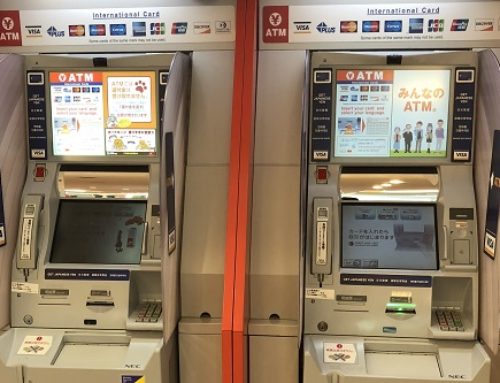
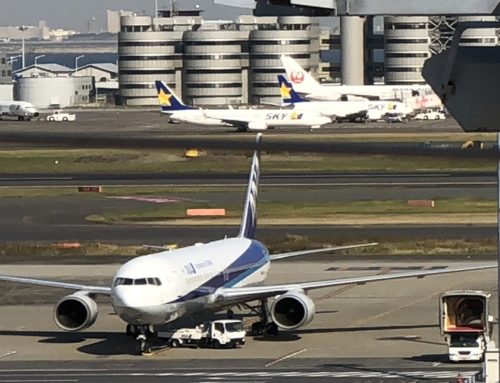
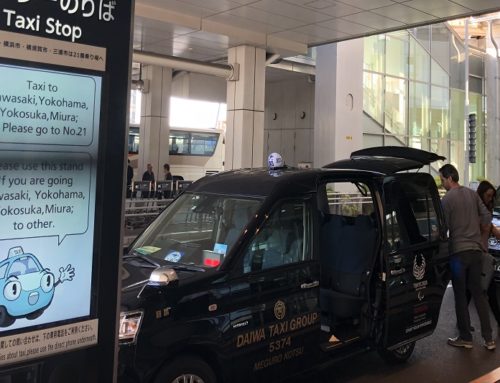
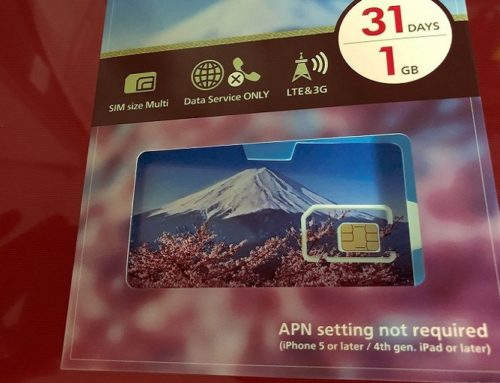
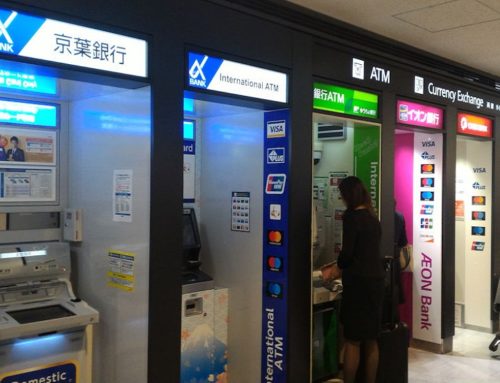
Leave A Comment